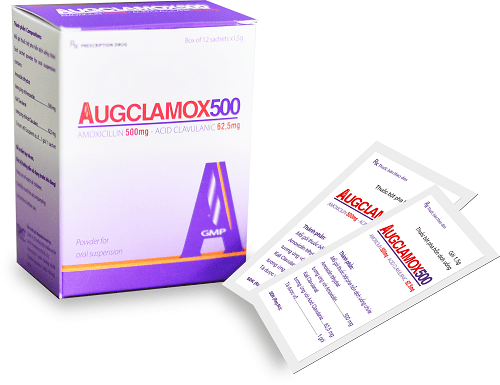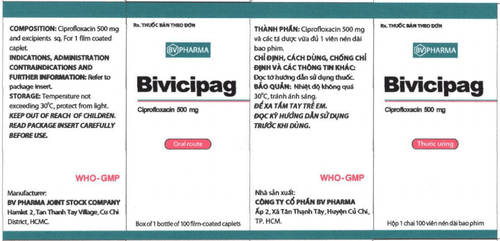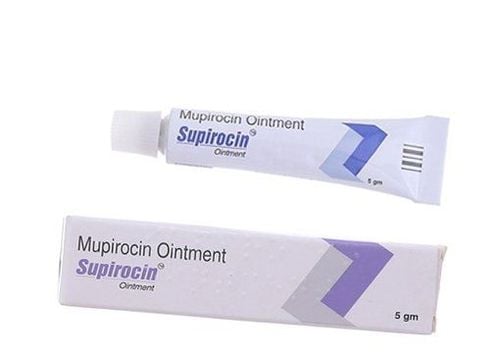This is an automatically translated article.
Cefaxil is a prescription drug, effective in the treatment of inflammatory conditions, infections of the respiratory tract, urinary tract, skin,... Learn some information about uses, dosages and precautions when using Cefaxil will help patients take the drug safely and effectively.
1. What is Cefaxil?
Cefaxil belongs to the group of antiparasitic, anti-infective, anti-viral, anti-fungal drugs. The drug is prepared in the form of film-coated tablets, packed in boxes of 10 blisters x 4 tablets. The ingredient Cefuroxime acetyl in Cefaxil is a semi-synthetic broad-spectrum antibiotic belonging to the Cephalosporin group. Cefuroxime axetil is a prodrug of cefuroxime, which has little antibacterial activity when it is not hydrolyzed to cefuroxime in the body after absorption.Cefuroxime has antibacterial activity because it inhibits bacterial cell wall synthesis by binding to essential target proteins. Cefuroxime has effective antibacterial activity against many common pathogens, including beta-lactamase/Bephalosporinase-producing strains of both gram-positive and gram-negative bacteria. Cefuroxime is particularly resistant to many beta-lactamase enzymes of gram-negative bacteria.
After oral administration, Cefuroxime acetyl is absorbed from the gastrointestinal tract, rapidly hydrolyzed in the intestinal mucosa and blood to release Cefuroxime into the circulatory system of the patient.
Cefuroxime acetyl is best absorbed when taken with meals. Maximum serum concentrations are reached approximately 2-3 hours after oral administration of Cefuroxime acetyl with a meal. The serum half-life is 1 - 1.5 hours. The degree of protein binding of Cefuroxime acetyl is shown to vary from 33 to 50% depending on the method used.
Cefuroxime acetyl is not metabolized and is eliminated by glomerular filtration and tubular secretion. Concomitant administration of Probenecide with Cefuroxime acetyl increases the AUC by 50%. The serum concentration of Cefuroxime acetyl is reduced by dialysis.
2. Indications for use of Cefaxil
Cefaxil is a prescription drug, effective in the treatment of the following conditions:
Otitis media; Sinusitis; Tonsillitis ; Laryngitis; Sore throat. Pneumonia ; Acute bronchitis and exacerbations of chronic bronchitis. Pyelonephritis; Cystitis ; Urethritis; boils; Purulent dermatitis; Impetigo; Typhoid fever; Gonorrhea ; Urethritis due to acute gonorrhea; Cervicitis.
3. Dosage - How to take Cefaxil
How to use Cefaxil:
Use Cefaxil for 5-10 days, take it after eating. Dosage of Cefaxil for adults:
For most infections, the dose of Cefaxil 250mg twice a day is common; Typhoid fever : Cefaxil dose 500mg x 2 times/day; Genitourinary tract infections: Cefaxil dose 125mg x 2 times/day; Mild to moderate lower respiratory tract infections: Cefaxil dose 250mg/time x 2 times/day. Severe cases, suspected pneumonia: Cefaxil dose 500mg/time x 2 times/day; Pyelonephritis: Use a dose of Cefaxil 250mg/time x 2 times/day; Treatment of uncomplicated gonorrhea single dose 1g. Early Lyme disease: Cefaxil 500mg twice daily for 20 days. Dosage of Cefaxil for children:
For most infections, the dose of Cefaxil is 125mg/time x 2 times/day, up to 250mg/time; Typhoid fever: Cefaxil 250mg/time x 2 times/day; Children 2 years of age and older with otitis media or serious infections should use Cefaxil 250mg / time x 2 times / day. Note: The above dose of Cefaxil is for reference only. The specific dose of Cefaxil depends on the condition and the progression of the disease. To get the right dose of Cefaxil, patients should consult their doctor or healthcare professional.
4. Contraindications to the use of Cefaxil
Do not use Cefaxil in case the patient is hypersensitive to Cephalosporin and its components and excipients.
Contraindications are absolute. This means that Cefaxil can not be used for any reason in cases of contraindications. Any decision about the dose and method of taking Cefaxil should be made by your doctor.
5. Cefaxil side effects
In addition to its therapeutic uses, Cefaxil can cause some of the following side effects for patients:
Erythema multiforme; Skin necrosis due to toxicity ; Skin rash; Urticaria, itching; Drug fever ; Serum sickness; Diarrhea; Nausea and vomiting; Eosinophilia; Increase liver enzymes ; Pseudomembranous enterocolitis; Decrease in white blood cells and platelets. Cefaxil may cause other unwanted effects. It is necessary to closely monitor and advise patients to notify their doctor of any unwanted effects encountered during the use of Cefaxil.
6. Be careful when using Cefaxil
Care should be taken when using Cefaxil for the following subjects:
People who are allergic to Penicillin antibiotics; Diagnose pseudomembranous enterocolitis when severe diarrhea follows antibiotic use. Pregnant and lactating women. Note: To avoid unwanted interactions when using Cefaxil, patients should inform their doctor/pharmacist of all medicines, dietary supplements, vitamins or herbs... they are taking.
Above is all information about Cefaxil, patients need to read carefully the instructions for use, consult a doctor / pharmacist before using. Note, Cefaxil is a prescription drug, patients need to use the drug as prescribed by the doctor, absolutely do not self-treat at home.













